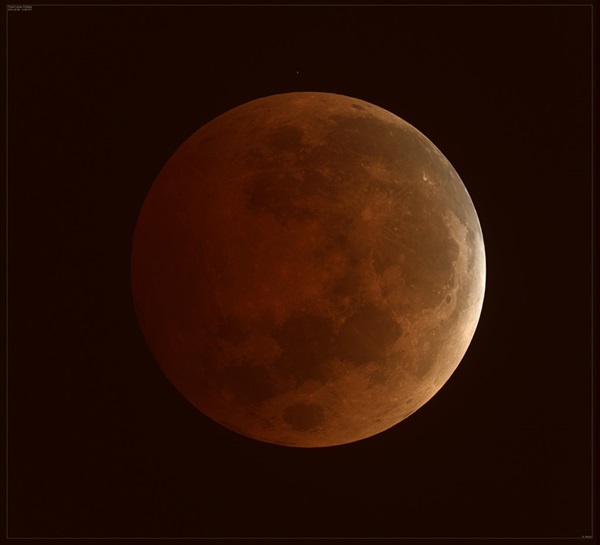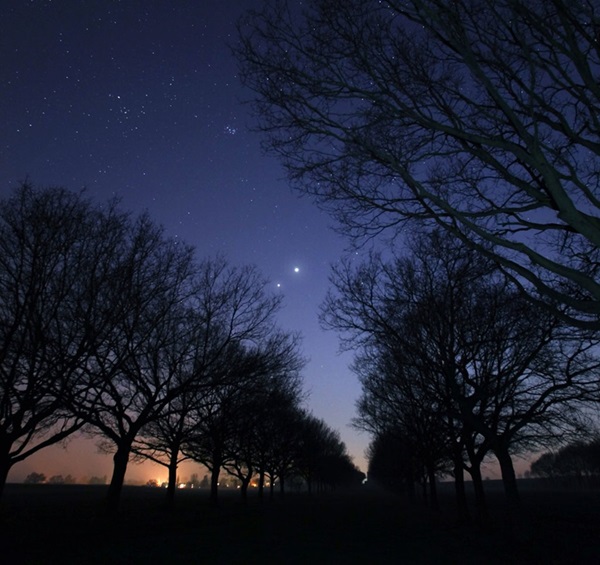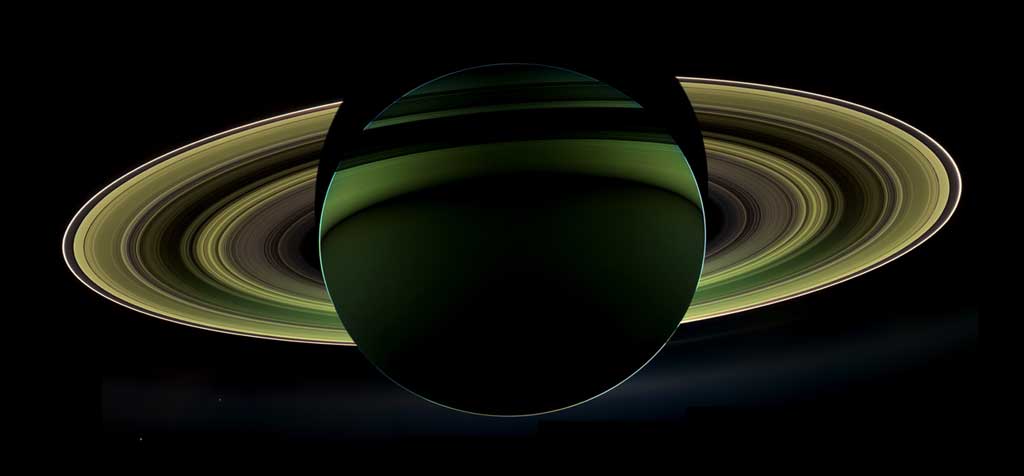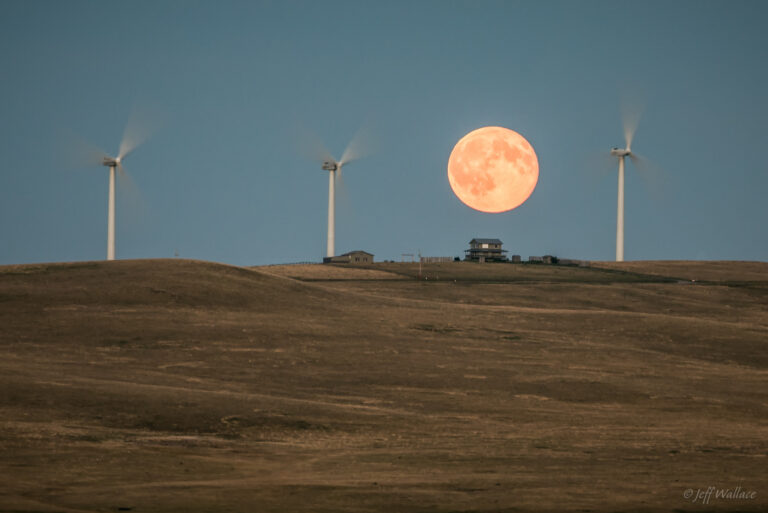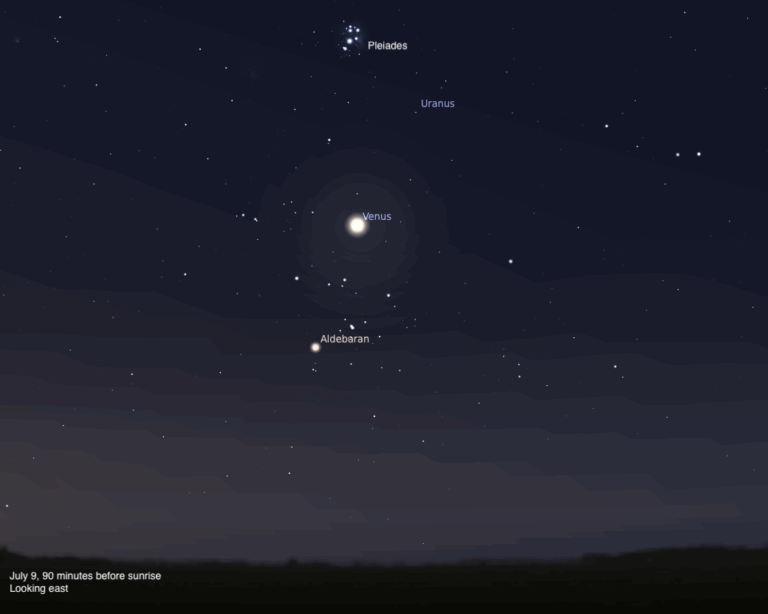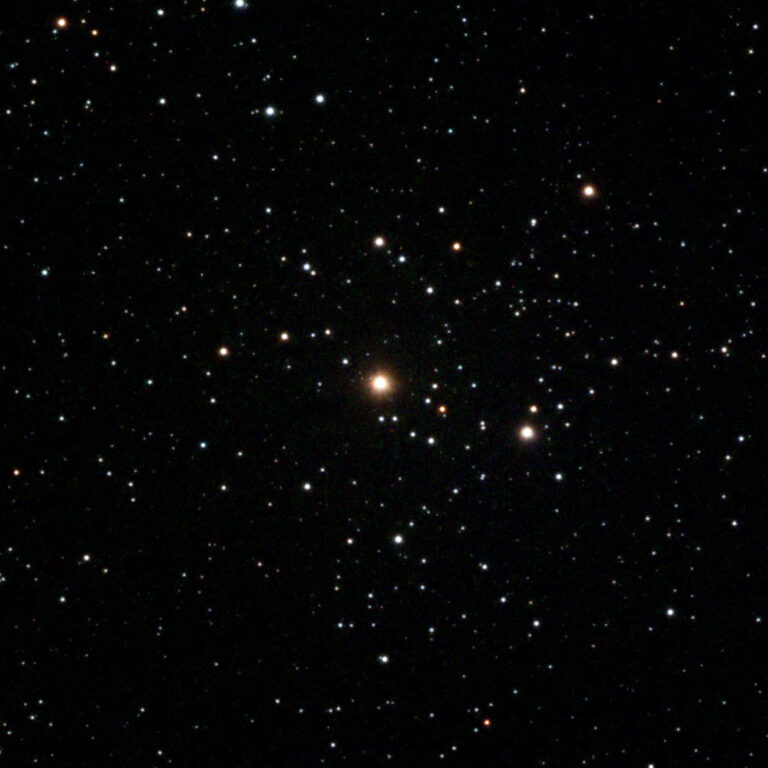Key Takeaways:
For those who recently caught the observing bug, the so-called Summer Triangle must seem like a huge misnomer. That’s because this asterism remains on view after darkness falls in January. Look for Vega, the fifth-brightest star in the sky and the brightest triangle member, low in the northwest. Deneb lies above Vega and about one-third of the way to the zenith. Deneb marks the top of another asterism, the Northern Cross, which stands nearly straight up from the horizon on January evenings. Altair, the third triangle member, scrapes the western horizon and sets around 6:30 p.m. local time.
Saturday, January 19
Although Uranus reached opposition and peak visibility nearly three months ago, it remains a tempting target. The outer planet appears nearly 60° high in the southwest after darkness falls and doesn’t set until after midnight local time. The magnitude 5.8 world lies in southeastern Pisces, some 1.2° north of the 4th-magnitude star Omicron () Piscium. Although Uranus shines brightly enough to glimpse with the naked eye under a dark sky, use binoculars to locate it initially. A telescope reveals Uranus’ disk, which spans 3.6″ and shows a distinct blue-green hue.
Sunday, January 20
Anyone with clear skies across the Americas can witness this week’s biggest event: a total eclipse of the Moon. The Full Moon, which arrives officially at 12:16 a.m. EST tomorrow morning (9:16 p.m. PST this evening), then lies deep in Earth’s shadow. The eclipse’s partial phases start at 10:34 p.m. EST. The shadow appears dusky gray at first, but as more of the Moon sinks into the shadow, it should take on a distinctly orange color. The color comes from sunlight refracted and scattered through Earth’s atmosphere, and appears most prominent during totality, which lasts from 11:41 p.m. to 12: 43 a.m. EST.
Monday, January 21
Near-Earth asteroid 433 Eros continues its close encounter with Earth this week. It glows at 9th magnitude, bright enough to see through small telescopes. The asteroid resides in southwestern Auriga, and tonight it passes 2° west of 3rd-magnitude Iota () Aurigae. This region lies high in the east after darkness falls and passes nearly overhead around 9 p.m. local time. Be sure to catch Eros this month — it won’t be as close or as bright again until 2056.
The Moon reaches perigee, the closest point in its orbit around Earth, at 3:00 p.m. EST. It then lies 222,042 miles (357,342 kilometers) away from us.
If you’ve been watching the predawn sky the past few weeks, you’ve seen Venus and Jupiter edging closer to each other. The two meet in a spectacular conjunction this morning, when Venus passes 2° north (to the upper left) of its companion. The pair rises shortly after 4 a.m. local time and climbs nearly 20° high in the southeast an hour before sunrise. Venus shines at magnitude –4.4, about 10 times brighter than magnitude –1.8 Jupiter. The conjunction looks best with the naked eye and binoculars, but it won’t hurt to target the two individually through a telescope. Venus shows a disk that measures 21″ across and appears slightly more than half-lit, while Jupiter spans 33″ and displays at least two conspicuous cloud belts.
Wednesday, January 23
Two of the finest deep-sky objects shine prominently on January evenings. The Pleiades and Hyades star clusters appear highest in the south in early evening but remain conspicuous until well after midnight. The Pleiades, also known at the Seven Sisters and M45, looks like a small dipper to the naked eye. The larger Hyades forms the V-shaped head of Taurus the Bull. Both look nice with to the naked eye, but binoculars show them at their best.
Although Saturn passed on the opposite side of the Sun from Earth early this month, it already appears low in the southeast during morning twilight. From mid-northern latitudes, the ringed planet rises more than an hour before the Sun and climbs 5° above the horizon a half-hour before sunup. Saturn shines at magnitude 0.5, which makes it the brightest point of light in this part of the sky. Still, it won’t be easy to pick out of the bright twilight. To find it, use binoculars and scan to the lower left of Venus and Jupiter.
Friday, January 25
With the waning gibbous Moon now rising late in the evening, it’s a good time to look for Sirius. The night sky’s brightest star (at magnitude –1.5) appears prominent in the southeast as darkness falls and lies due south and at its highest elevation around 10 p.m. local time. From mid-northern latitudes, it then stands about one-third of the way from the horizon to the zenith. (The farther south you live, the higher it appears.) If you point binoculars at Sirius, look for the pretty star cluster M41 in the same field of view, just 4° south of the star.
Saturday, January 26
Mars continues to put on a nice show in January. Look for the Red Planet halfway to the zenith in the southwestern sky as darkness falls. The world shines at magnitude 0.8 against the much dimmer stars of southern Pisces. (Tonight, Mars slides 0.9° south of the 4th-magnitude star Epsilon () Piscium. A telescope reveals the planet’s 6″-diameter disk, but you likely won’t see any surface features unless you have exceptionally good seeing.
Sunday, January 27
Last Quarter Moon occurs at 4:10 p.m. EST. The Moon doesn’t rise until nearly 1 a.m. local time tomorrow morning, however, by which time it will appear slightly less than half-lit. The Moon spends the morning hours set against the background stars of northern Libra.

